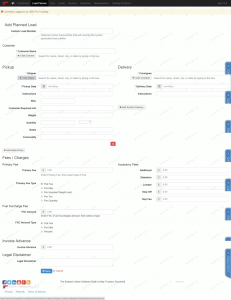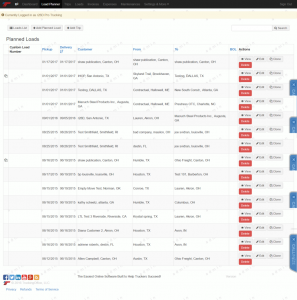The first time that Joe and Angela decided to try LTL trucking, the whole process struck them way harder than it needed to be. How difficult could it be to put three loads on a truck in Ohio, Indiana, and Illinois, and deliver them to Houston, Austin, and Lubbock, Texas? It sounded simple.
It was more of a nightmare. Angela won’t talk about it and Joe said he’d never do it again… but they had to. They couldn’t find loads that filled their trailer that paid enough and the loan payments forced them to learn the hard way how to manage LTL shipping.
The Key Is In the Routing
Joe and Angela were terrified of deadhead miles. They thought that taking small loads, even at extremely low rates was better than an empty rig. Joe didn’t have any evidence of that, but it made sense, right? Called it Goldilocks Routing – it had to be just right. Sometimes they’d drive five extra hours out of their way just to pick up a load so when they dropped the last one, they’d still have something in the trailer.
Angela would puzzle over maps for hours to find the right routes. A keen eye on the load boards helped them start to make more money, but after a year, they both agreed: they needed better tools. Routing and LTL had to be managed with precision. Google Maps was just not cutting it.
Drivers have to be aware of the roads – which ones they want to take and what they want to avoid. After an unexpected detour took them through the panhandle of West Virginia and cost them an extra IFTA payment, Angela now plots things a lot more carefully. Deciding to focus on the Midwest and leave Texas to the Texans, she’s starting to learn what are the best loads for them, but the routing can still stump her. Finding the best way to put together LTL loads in the 21st century shouldn’t require index cards and a magnetic whiteboard, should it?
What is LTL and How Does It Work?
Less than truckload (LTL) means that a shipment or load does not fill the entire truck. Typically, freight consolidation shipments can weigh from 100 to 10,000 pounds and are usually stacked on pallets. LTL carriers often carry several separate shipments at once. Small businesses like to use LTL because it is more affordable and offers some flexibility.
LTL shipping is beneficial for several reasons:
- Freight consolidation means fewer trucks delivering small loads, thus reducing emissions.
- Customers appreciate LTL because it allows them to combine several small orders together to meet minimum requirement s.
- LTL shipping is generally less expensive than FTL because customers only pay for the portion of the truck their products occupy.
One of the disadvantages for LTL providers is that most companies won’t pay for mileage between drops on the truck route, which can affect HOS. Accordingly, drivers need a solid plan for making the most of their miles. Knowing about truck stops along my route, whether in the area, and highway conditions is helpful.
Like anything else, there are pros and cons in the LTL business. Of course, as a truck driver or fleet owner, you want to make the most of your time and fuel, and LTL driving can help with both.
Routing and LTL and TruckingOffice
TruckingOffice Pro now offers LTL shipping management with a great tool – the Load Planner. Using this allows truckers to create the best possible (profitable!) trips with a minimum of deadhead miles quickly, so they can get the loads off the load boards before someone else does. With the great invoicing tools and the FileSafe™ option to send images of the bills of lading to speed up payments, truckers can make LTL shipping more profitable than ever in the days of Amazon and overnight shipping.
First, you’ll need to enter a dispatch into the TruckingOffice system:
This creates all of the data for TruckingOffice to prepare your invoices, driver settlements, IFTA, IRP, and business reports. Then you can go to the Load Planner screen that allows you to determine the best options for you. Is this a good load for you? Will you end up with hundreds of deadhead miles? Will you make a profit?
You decide what works for you. TruckingOffice makes it easier by providing you with the information you need to make informed decisions.
Joe and Angela are making LTL work for them. Should you give it a try? TruckingOffice Pro can help you not only work at it but succeed with it. Try our 30 day free trial to see what you can do.








Recent Comments